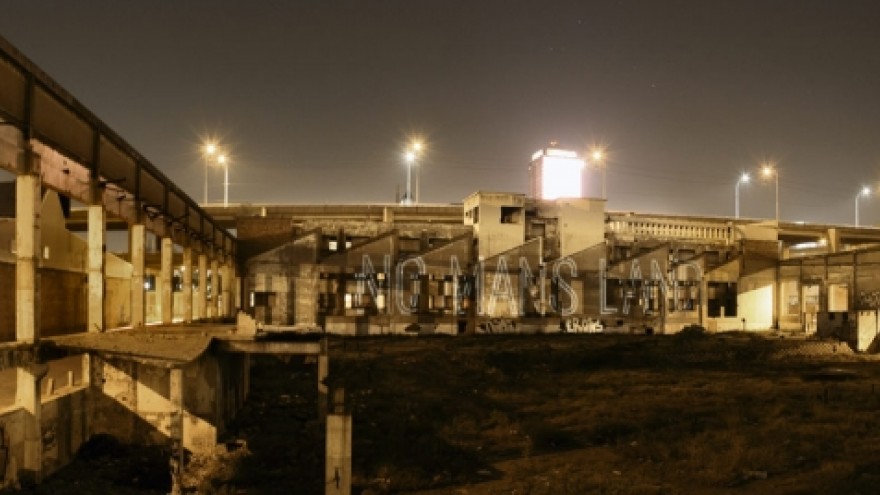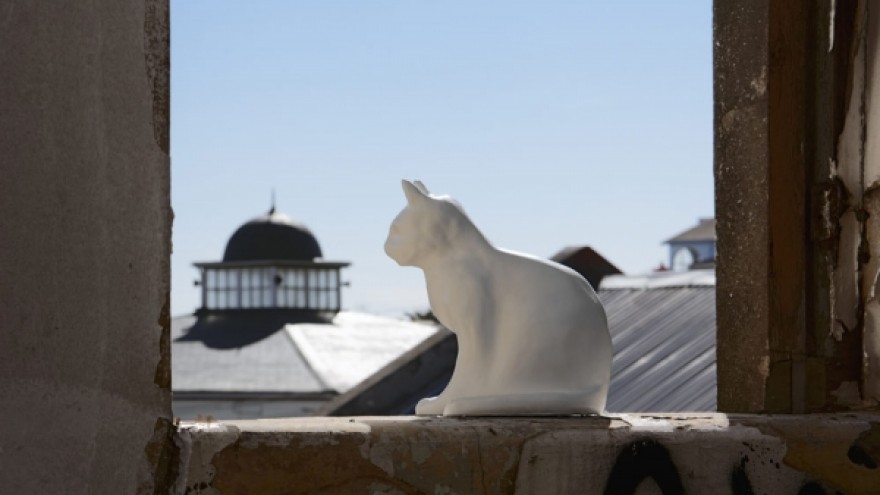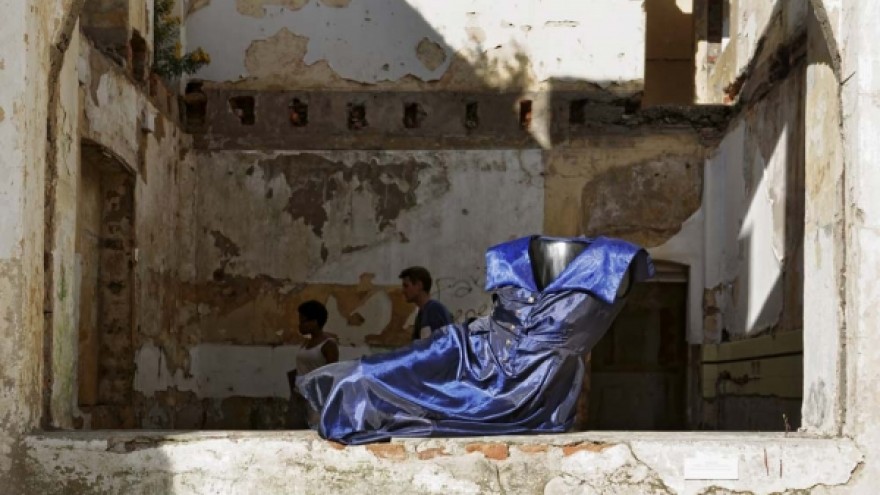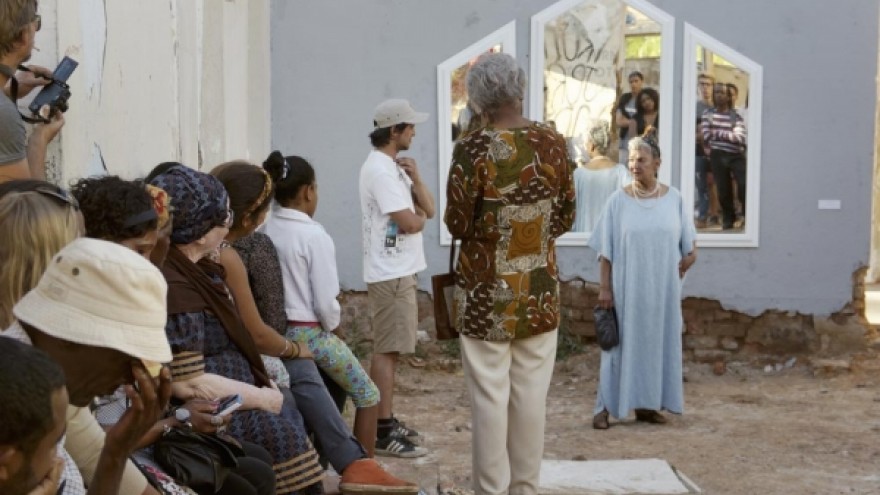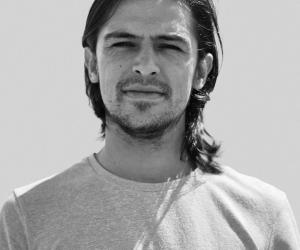Whose voices represent half of the world’s population? Those born in 1989 and later.
They are only now beginning to be heard and made more prolific by the digital age which also so happened to come about in 1989 with the creation of the World Wide Web. Many things changed around the globe, and in South Africa it was on the cusp of finally becoming free and democratic in 1994.
Mapping what motivates and informs their practice, and how they innovate as digital natives for the Cape Town inaugural 89plus post panel at Design Indaba 2014, we now introduce multidisciplinary artist and participant Haroon Gunn-Salie.
Together with 89plus co-founders Hans Ulrich Obrist, and Simon Castets and myself, Missla Libsekal (Another Africa founder) we talked with Haroon, a digital native belonging to 50% of South Africa’s median age group.
Haroon raises strong notions such as the tranformative power of art, of participatory art within marginalised communities, and the democratization of information.
If your work could be described by keywords what would they be?
‘Site-specific’ ‘Dialogue-based collaborative art practice’ ‘Dialogical artwork’ ‘Activism’ ‘Street Art’ ‘Conceptual art’ ‘Public Art’ ‘Interdisciplinary practice’ ‘Process-led research’ ‘Temporary situations’ ‘Responsive’ ‘Social justice through art’ ‘Intergeneration practice’ ‘Interdisciplinary practice’ ‘Installation art’ ‘Performative’
How did you come to art?
I have always been a visual person and from a school going age I have been inspired by the graffiti and mural artworks that layered Cape Town’s public spaces where I grew up. I was drawn to the conceptual underpinnings of the graffiti movement because of its free-for-all audience.
How does dialogue become material or translate into objects in your practice? What is your process for this?
One such example is a work titled One day my kittens will return. The work was conceptualized in response to a graphic novel script written by Ms Fasia Adams. I created a litter of kittens out of casted concrete and staged the work as a symbolic homecoming of the piece in the WITNESS exhibition.
How does location figure into your practice?
Locality and site-specificity plays an important role in informing many of my works. In 2012, I held a site-specific, collaborative exhibition titled WITNESS in District Six. The exhibition, held in a derelict building in the area helped to confirm the power of participatory public artwork that continues to inform my practice.
Who are the participants and collaborators in your artworks? How do you select them? What is the role of community? What is the line between participation and representation?
For the WITNESS exhibition, I worked with the District Six museum’s Seven Steps Club, a group of veteran residents who meet monthly as a reconstitution of community. In 2013 I collaborated with Dereleen James, a mother from Eldorado Park in Johannesburg, a tireless anti-drug campaigner in creating a live oral-history dialogue space (for a group exhibition Working Title at the Goodman Gallery in Johannesburg).
Many of your works involve site-specific installations—how is your work conceptually grounded in the surroundings of Cape Town/South Africa and what kinds of reactions or difficulties, if any, have you encountered in executing these works?
My work is largely informed by locality, particularly that of a polarized post-colonial, post-apartheid society. In many ways, the hangover of apartheid is a burden bore by the youth. I recently executed a site-specific artwork and social intervention titled Zonnebloem renamed, created with an impetus of social justice and transformation.
How has your background in sculpture contributed to your current method of work?
I was very fortunate to be taught by master sculptors Jane Alexander and Gavin Younge. I was able to see that sculpture can capture ‘real world’ forms and narratives with far-reaching referential potential. My workTurn the other way, recently exhibited at ArtBasel in Miami, is an example of this logic.
Can you tell us about recent works and projects?
I am happy with the works I have articulated in my short career, and will keep furthering and deepening my work. I recently completed the vision of one of my 2012 works titled, Sunday Best as a bronze sculpture for my first solo exhibition at the Goodman Gallery in Johannesburg (22 February – 29 March 2014).
Within your contemporaries, whose work do you most relate to? Do you sometimes work collaboratively? Do you see generational creative patterns? Are you part a group of artists? A movement?
I work collaboratively on all of my artworks but am not currently associated with any art groups or collectives. I constantly provoked by conscious reaction to the work of the Brother moves on. I believe the collective to be one of the most important and relevant creative momenta practicing in South Africa.
How would you describe your relationship to online socialization, and do you see it playing a part in your work?
I believe that online connectivity has a large role to play in the transformation and democratization of information. A platform like 89plus would not be possible without the interconnectedness that the Internet affords us as young people.
As an employee at the Human Rights Media Centre in Cape Town and with many of your projects focused on societal issues, do you consider human rights activism a driver of your work as an artist?
I worked as media officer at the Human Rights Media Centre in Cape Town though my studies and through the work was exposed to the importance of oral history, particularly to highlight the grassroots voices often discounted by the grand narrative of history.
Art can lend itself to humanise and reconcile human experience, your project WITNESS on forced removal echoes this. As a ‘context provider’ what has the process elicited for the communities and individuals that you’ve collaborated with?
What has become clear through the realisation of storytelling through sculptural forms is that the process can provide catharsis for unresolved trauma. Subsequent work, No mans land in collaboration with Zimbabwean refugee Alfred Kamanga had transformative impact and received a merit award at the 2013 Sasol new signatures exhibition.
What will change everything?
Understanding through communication and dialogue.

